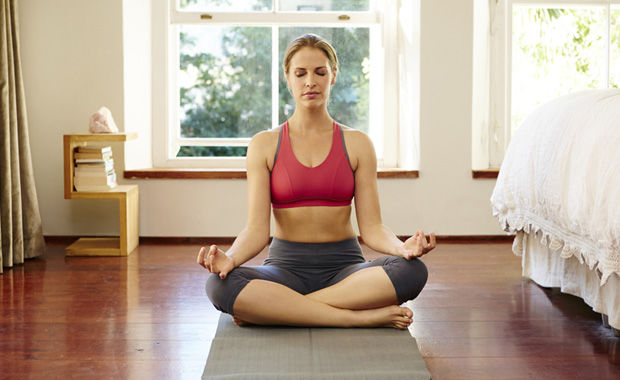How Insomnia Is Robbing Canadians Of A Good Night’s Sleep
Education and Advocacy About 40% of the Canadian population is living with a sleep disorder, insomnia being the most prevalent.

Indeed, about 10% of the adult population in Canada experience persistent insomnia while an additional 20% to 25% report occasional insomnia symptoms. Insomnia can be a problem for anybody but is most frequently reported by women, older adults, shift workers, and people with medical or psychological problems.
Research has shown that stress, anxiety, and depression are the most common causes of insomnia.
This night thief is defined as a dissatisfaction with sleep quality or duration, along with problems falling asleep at bedtime, waking up in the middle of the night (one or multiple times), or awakening too early in the morning. If sleep difficulties are present three or more nights a week and cause distress or impairments of daytime functioning such as fatigue, decreased energy, mood disturbances, or concentration problems, then insomnia becomes a clinical problem.
Research has shown that stress, anxiety, and depression are the most common causes of insomnia. On the other hand, suffering from chronic insomnia also increases the risk to develop depression. Medical illness can also disturb sleep due to underlying symptoms (such as pain), the treatment used to lessen those symptoms, or emotional distress about the illness. Insomnia can also be the symptom of another sleep disorder like restless legs syndrome, periodic limb movements in sleep, and sleep apnea. For more details on sleep apnea, see the other section of this article or visit the Canadian Sleep Society website for information on sleep disorders.
People with insomnia often develop bad habits that contribute to the on-going sleep problem (e.g., extending time spend in bed to try to sleep more, naps) and/or beliefs and thoughts (fear of sleeplessness, excessive worries about daytime consequences). Bed resting can be useful in the short term but in the long run it becomes incompatible with sleep and perpetuates insomnia. In that regards, rules 1, 2 and 8 (as listed in the section on Healthy Sleep Habits) should be strongly followed. In addition, and as part of the most effective treatment for insomnia (and to break the vicious cycle of being afraid of not sleeping which then arouses body and mind and anticipates consequences of bad sleep), Cognitive-Behavioural Treatment (CBT) constitutes additional rules These rules are:
9. Create a sleep window corresponding to the duration of hours you sleep. For example, if you say that you get 6 hours of sleep each night, you can decide to go to bed at 11:00pm and get out of bed 5:00am, or go to bed at midnight and get out of bed at 6:00am. It is your window, fix it (never fix a sleep window below 5 hours in bed though). The most common consequence of a sleep window is a mild sleep deprivation and sleepiness the next day. This sleep window will help you regulate your sleep (in the same line of thinking as rule 1) and rediscover sleepiness.
If you are lying awake in bed, unable to fall asleep or go back to sleep during the night, allow a maximum of 20 minutes of tossing and turning.
10. If you are lying awake in bed, unable to fall asleep or go back to sleep during the night, allow a maximum of 20 minutes of tossing and turning. Staying in bed will just associate your bed (and bedroom) to the stress of not falling asleep and will significantly interfere with your ability to fall asleep. Being out of bed during the night is one of the hardest thing to do, especially when everybody around you sleeps. Go to a different room, have a comfy blanket waiting for you and engage in a relaxing activity (not the time for vacuuming). When feeling sleepy (not tired, SLEEPY), go back to bed. Do this as many times as needed during the night. If you go to bed without feeling sleepy, it will delay sleep onset and associate your bed with wakefulness (something you do not want as you are looking to sleep)!
11. By combining rules 9 and 10, and observing rules 1, 2 and 8 at the same time, you will decondition your body and mind from sleeplessness. When you have the feeling that 85% of your time in bed is spent sleeping (and not trying to), increase your sleep window.
12. Give yourself at least one hour to unwind before bedtime. We often forget that when we were a child, we used to have routine. Remember when you used to run around the house just before going to bed? Was this adequate for falling asleep fast? No. A routine, even as an adult is a blessing for facilitating sleep. Use this transitional period to read, watch television, listen to music, or simply relax. Do not ruminate about events of the day. Instead, write down your worries and set-up a time (could be up to 30 minutes) for ruminating and worrying during the day.
To address the cognitive component of this treatment (beliefs and attitudes about sleep) and obtain guidance on applying the rules, a professional knowledgeable about CBT-I is recommended. Please check on the CSS website (http://css-scs.ca/sleepclinics) for a listing of clinicians in your area with expertise in treating insomnia. These are experts who received full training on sleep and sleep disorders, such as insomnia.
Finally, even if there are many treatment options out there (e.g. medication – prescribed and over the counter, acupuncture, natural herbs), only CBT-I is effective in the long-term (scientific evidenced based). Medication shall be only prescribed for situational insomnia consequential of acute stress or life events (maximum 3 weeks). If you have been using sleep medications for a prolonged period and still have sleep difficulties, discontinuing very gradually such medication following a tapering schedule from your physician or pharmacist might be indicated.
For more information on the rules linked to CBT-I you may want to visit the ‘Brochures’ section on the Canadian Sleep Society website.
Healthy Sleep Habits
Restorative sleep is essential for our daily functioning. In addition to the quantity (total number hours needed to feel refreshed and alert), new research is showing how much quality also really matters. Sleep quality appears to have a great impact on quality of life and daytime functioning. To have restful nights (optimize your sleep), here are some rules:
- Keep a regular sleep schedule: fix a bedtime and an awakening time. This regular schedule will entrain your body for sleep and will keep your internal clocks aligned. You should also observe this schedule weekdays like weekends.
- Naps should be short (about 20 minutes) during daytime. If longer, they will interfere with sleep of the following night by either giving you trouble falling asleep or maintaining sleep during the night and/or induce lighter sleep during the night.
- Excessive alcohol ingestion four hours before bedtime as well as smoking should be avoided. Alcohol and smoking are known to arouse the brain. Sleep will be delayed or fragmented with heavy consumption.
- The last caffeinated beverage (coffee, tea, some sodas, energy drinks and chocolate) shall be drank about 6 hours before bedtime. If not, sleep can be delayed or fragmented (even if you say it does not affect you or interfere with your sleep, guess what, it does!).
- Do not go to bed on an empty stomach as it could take you longer to go fall asleep. Although you should avoid spicy or sugary foods about 4 hours before bedtime, a light snack before bed is OK (ex. a cup of warm milk has been reported has being also soothing for some individuals).
- Sane mind lives in a healthy body’. Regular exercise has been shown to deepen sleep. Exercise is welcome anytime, but not right before going to bed.
- Your sleeping environment shall be optimal: comfortable bedding, room temperature setting comfortable and well ventilated, as well as quiet and as dark as possible.Noises and light are distractors: they can delay sleep onset, produce small awakenings (thus lighter sleep) or provoke unnecessary early morning awakenings.
- Your bed shall be reserved for sleep and sex only. In fact, this should be applied to the whole bedroom. Why? Simple: your sleeping environment shall be associated with sleep. If you use your bed (bedroom) as an office, workroom or recreation room, your bed or bedroom is then associated to cues not related to sleep. It will delay falling asleep at bedtime or falling back asleep after an awakening in the night.




